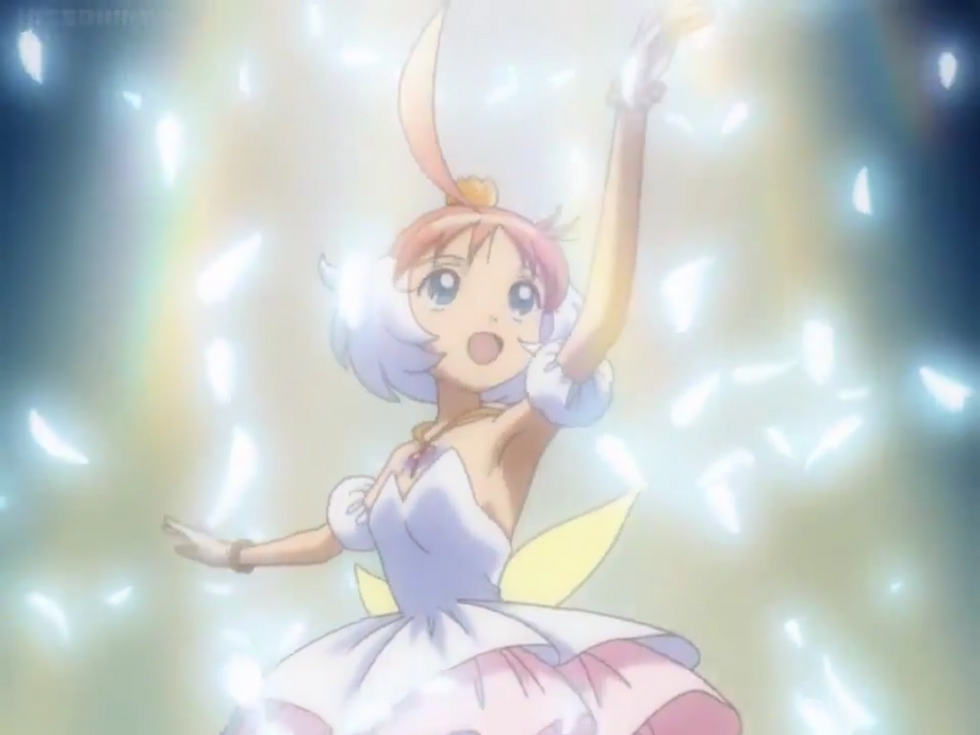Princess Tutu
- charlessynyard

- Mar 28, 2020
- 4 min read

Sorry anime! When I consider which art form is greatest, have to say ballet. Not as an expert or professional critic, mind you, but ever since my first time seeing a ballet, I’ve just been mesmerized by the beauty. Gracefully moving and posing human bodies, set to orchestral music, telling wordless stories. And unlike plaintive operas considered a success when they set an audience crying, it is hard for a ballet not to be filled with joy. Can something that amazing be captured in Japanese animation? Princess Tutu succeeds thanks to a fantastic plot in a fittingly European setting, and a reliance on music and tropes from classic ballet and related performance arts.
Just as, if you want to watch an American football anime, you’ll be watching Eyeshield 21, if you want an anime where ballet is a primary theme, Princess Tutu is the only option. A 2002 series spanning 26 episodes, we are fortunate to have even this one series; evidently it was given lower priority, such that the last 13 episodes were initially severed at the commercial break, and broadcast as 26 half-episodes to fit a timeslot.

The plot of the anime is set as the playing out of a fairy tale that becomes real. A
long time ago Drosselmeyer—every bit the eccentric mischief maker of Nutcracker fame—was writing a story, Prinz und Rabe (The Prince and the Raven), but dies before it is completed. However, the characters eventually escape the story, and continue their unending rivalry in real life, and each episode fittingly begins with a few lines of storybook narration. What’s more, all of Gold Crown Town has become enchanted, to the extent that some humans living in or visiting the town have become fable-style walking, talking animals, and all treat it as normal; only a few pause at wondering whether it’s always been so. (The location is based on the real life Bavarian town Nördlingen, noted for its well-preserved medieval architecture and intact city wall; fittingly, signage in the anime is in German. I read that inspiration for the city in Attack on Titan came from the same source.)

Under normal circumstances though, these magical transformations work only one way. On seeing the elegance of ballet, it’s common for young girls to want to take up ballet themselves, though the training and talent needed to master the moves of the dancers can be daunting. For Ahiru, there’s an added difficulty, because while female, she’s a duck—ahiru means duck. One day, she sees Mytho, the prince from Prinz und Rabe and now a popular, admired student at the art school Gold Crown Academy, near the lake where she lives, but notices he’s sad. Ahiru longs to make him happy. Fortunately, Drosselmeyer appears and gives her a pendant transforming her into a human girl (the spell is broken temporarily when she says “Quack!” or acts like a duck), and into Princess Tutu from the book. As Princess Tutu, Ahiru has the power to retrieve and restore Mytho’s heart shards, hidden in the hearts of townsfolk with emotional troubles like to what the heart shard contains. Being Princess Tutu has a caveat though: if she ever tells the prince she loves him, she’ll become a point of light and disappear.

Enrolling in Gold Crown Academy, Ahiru becomes a clumsy, always-late student in Neko-sensei’s ballet class, where Mytho, and with him dark-haired beauty Rue, are recognized as much more advanced students. Along with lighthearted moments—Neko-sensei’s gag of threatening students with marriage probably wouldn’t work were he not a cat—there are some lovely moments of dancing right here in the studio. Still the art style for Princess Tutu struck me as an odd choice; rather than rounded characters reminiscent of Ojamajo Doremi or HeartCatch PreCure!, something more angular, as in Shoujo Kakumei Utena (Revolutionary Girl Utena) and other Kunihiko Ikuhara anime for instance, might have worked better for depicting an art where form is so paramount. Perhaps it is simply suited to a program aimed at a young audience. After and outside of class the action, while perilous for Tutu and like a monster of the week feature, is usually nonviolent, and a good example of magical girl anime without fighting. Princess Tutu dances, gorgeously, with the troubled characters to heal their own hearts, expelling the heart shard that is then restored to Mytho.

Outwardly, Mytho and Rue are a close, cute couple, but in truth it’s a one-sided love: Mytho‘s heart is missing, leaving him emotionally vacant, to the extent that he can only tell Rue he loves her when she tells him he does. Still more sinister is Fakir, who watches over Mytho, drilling into him that he doesn’t need his heart, and keeping others from getting too close to him. However, this unfinished story has many twists, and over time relations, alliances, even romantic interests among Ahiru, Mytho, Rue, and Fakir shift as we learn more of their motives and as the influences upon them change. Fairy tale-inspired stories need to find a good mean between keeping to the conventions of the original folk craft, while also providing a novel ending that modern viewers will find satisfying and not simply copied from the past, and thankfully, Princess Tutu does an excellent job that should leave all happy. The theme music is wholly classical, much of it taken from The Nutcracker and Swan Lake, but also from Carmen and and adaptations of Romeo and Juliet and A Midsummer Night’s Dream among others. After it aired, a fan compiled a near-complete list of songs used in each episode, and it’s just astounding. https://archive.ph/R29f4
With planned-for events cancelled or indefinitely postponed, few ballets are showing around the globe right now, but in this anime, the dreamlike scenes of pink-clad girls leaping great lengths, spinning as perfect as tops in a lover’s guiding hands, are still in motion.





Comments